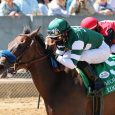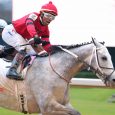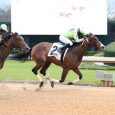By Ray Wallin
Lawrence Peter Berra, better known as Yogi Berra, is considered one of the greatest catchers in baseball history. He was an 18-time All-Star and won an amazing 10 World Series titles over his 19-season career.
Elected to the Baseball Hall of Fame in 1972, he would go on to be known for his impromptu witty comments or “yogi-isms” that offered an underlying powerful message. In his wit is wisdom and great advice for being profitable at the track.
“Slump? I ain’t in no slump … I just ain’t hitting.”
As horseplayers we are all subject to hot and cold streaks. One day you can’t lose, the next day you can’t win. When you can’t catch a break, you start to doubt your handicapping abilities and methods.
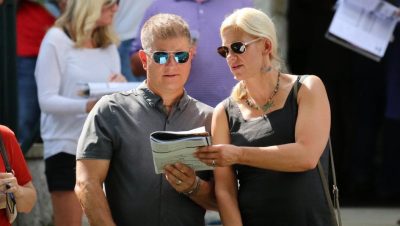
Handicapping – Photo courtesy of Penelope P. Miller
Think of how we view a baseball player that is in a slump. We are focused on whether they are producing at the plate or not. It doesn’t matter that he is playing his position well and saving runs from scoring with his defensive prowess, we are only focused on the grounders that can’t find their way out of the infield or fly balls that are a few feet short of a home run.
Remember that when you are in a slump that your handicapping may be sound, but you just aren’t hitting. Keep going with what you know, and you will see the results in the long run.
“I always thought that record would stand until it was broken.”
A lot of novice handicappers fall victim to assuming that a young horse will run to its best previous speed figure. Some also wrongly think that the last race is a sole indicator of how the horse will run today.
Like the expression, “records are made to be broken,” the same holds true for the performance of a horse, especially younger horses. As horses develop, they are likely to keep improving from race to race until they are into their four-year-old season. Not only are they maturing, but their trainers are starting to stretch them out, try them on turf, and figure out what surface and conditions give their horse the best chance to win and run to the best of their ability.
Older horses will start to decline in time, but you can count on them to surprise you occasionally as well. While I am not a fan of the term bounce, you will see the ups and downs in their past performances. Realize that they will regress to the mean and have good days and bad days too.
“It’s tough to make predictions, especially about the future.”
If handicapping the races was easy, every race would be won by the favorite, and we’d make no real money at the track. Trainers wouldn’t enter their horses to take a shot at the big purse and we wouldn’t see the Cinderella stories of 99-1 shots that hold on at the wire.
As handicappers we are tasked with taking a mess of data, figures, and numbers and turning it into a forecast of an outcome. While the amount of information can be overwhelming at first, you can parse down the data to what you need for what works for you.
I have known handicappers that brag about using 30-plus different weighted factors in any given race to get their contenders. The key is to make your system or handicapping method no more complex that it needs to be. Keep it simple and boil it down to what works.
“You can observe a lot by watching.”
I know handicappers that place their bets and move on to another track or interest. I also know handicappers that watch every race they place to see how their predicted pace worked out.
There are also handicappers like my good friend Saratoga Dave who will take copious trip notes of every NYRA race to find the comments that don’t make the past performances. I know he spends more time than he’ll admit to me watching the replay of each race over and over until he has notes on all the entrants, but his time is well spent as he crushes the NYRA circuit year after year.
In the hectic world we live in where we are trying to balance work and life, it is easy to take shortcuts. I don’t watch enough replays and rely heavily on the charts. I don’t have time to attend the races live as often as I would like either and camera angles don’t give you the best view of the horse’s physical presence in the paddock or post parade.
Like the adage, “a picture is worth a thousand words,” Yogi Berra was spot on with this one.
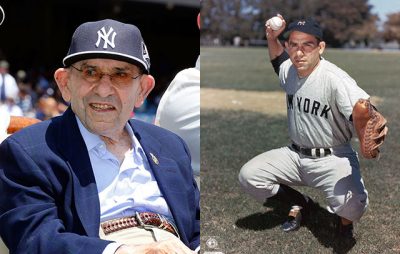
Yogi Berra – 1925 – 2015 – Photo courtesy
“If you don’t set goals, you can’t regret not reaching them.”
Have you ever asked yourself why you play the races? What was your answer?
For some it is the thrill of beating the game. For others it is to also win money. If you are looking to build a bankroll, you need to have a plan. You need to set goals for both refining your handicapping skills and approach as well as establishing sound money management.
If you haven’t set some SMART goals, you need to. It could be solving the problem of comparing races from track to track or finding sire data that makes sense for you. It could be to try to double your bankroll by the end of the year. Maybe you need to establish a better system for tracking your wagers and spot play angles.
Regardless of whether you meet and exceed your goals in the timeframe you establish, you can’t regret not achieving something you didn’t try.
Hidden in Yogi’s best quotes are some real gems that will help you on your path to making your living playing the races. While you are on this path to becoming profitable you will always be faced with touch decisions so remember what Yogi would tell you to do, “When you come to a fork in the road, take it.”

